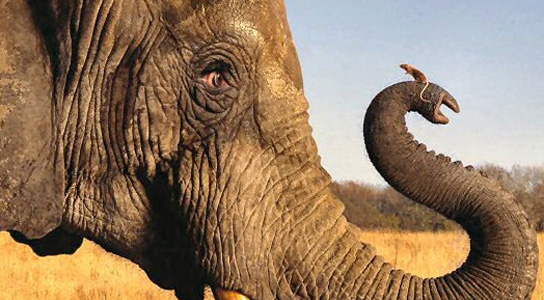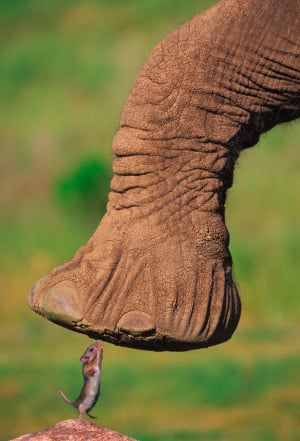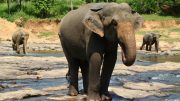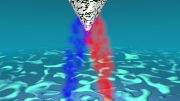
Evolutionary biologists found that it took 24 million years for an evolutionary transition from a mouse-like animal to an animal the size of an elephant. Credit: Design Less Better
Evolution has its quirks, and getting from a mouse-sized animal to a pachyderm didn’t take thousands of years, it took millions. Evolutionary biologists have published findings in the journal Proceedings of the National Academy of Sciences have discovered that it took 24 million years to get from a mouse-like animal to an animal the size of an elephant.

Credit: Design Less Better
Researchers were led by Alistair Evans, an evolutionary biologist at Monash University in Clayton, Australia, and they investigated how to get to a maximal body mass, that had increased among 28 orders of mammals on multiple continents during the past 70 million years. They compared the sizes of the largest members of the mammal groups at different points in time, using modern mammals to estimate the length of a generation for each group. Evans et al. tracked the speed at which mammals expanded.
The top speed of mammalian growth was slower than had been previously thought. The 100,000-fold size increase was thought to have taken between 200,000 and 2 million generations. Larger-scale alterations require more time. If everything above the size of a rabbit was wiped out, it would take at least 5 million generations to get back to elephant-sized animals, states Evans. That translates to 20 million years.
Whales grew much quicker than land-based animals. It took only 3 million generations for a 1,000-fold size increase. Downsizing also occurs much faster. The shrinking speed is 30 times faster. Size increases require the accumulation of a skeletal infrastructure to support massive frames, but when mammals shrink, they can bypass these evolutionary obstacles.
Reference: “The maximum rate of mammal evolution” by Alistair R. Evans, David Jones, Alison G. Boyer, James H. Brown, Daniel P. Costa, S. K. Morgan Ernest, Erich M. G. Fitzgerald, Mikael Fortelius, John L. Gittleman, Marcus J. Hamilton, Larisa E. Harding, Kari Lintulaakso, S. Kathleen Lyons, Jordan G. Okie, Juha J. Saarinen, Richard M. Sibly, Felisa A. Smith, Patrick R. Stephens, Jessica M. Theodor and Mark D. Uhen, 30 January 2012, Proceedings of the National Academy of Sciences.
DOI: 10.1073/pnas.1120774109









It is true. Once upon a time the horse was also very small sized. Please note that from a mouse to a pachyderm it takes only 24 million years, which is small in the history of geological life of earth which is 4.6 billion years.Have we not come across Dinosaurs of gigantic size in the Jurassic Age earlier than this? The growth was entirely on reptiles. The sudden wiping out of dinosaurs from earth changed the strategy to grow into smaller animals naturally in a lesser period. The accumulations of bone mass depends on the availability of food resources which were in plenty in the intiatial plant abundance in the earth. Why? Even in Australia, in the absence of any predators, facilitated the growth of giant birds like Emu and Ostrich. The tendency is to increase in size only until constrictions come on the way to get abundant food. The fittest of tghe survival theory holds good to somehow manage to live even by downsizing their morphology like a cat from a tiger.The abundance of food in the sea promoted the formation of dolphins and whales and the depletion due to climatic conditions began their downsizing. Adaption to the environment is the key formula for its success. Thank You.